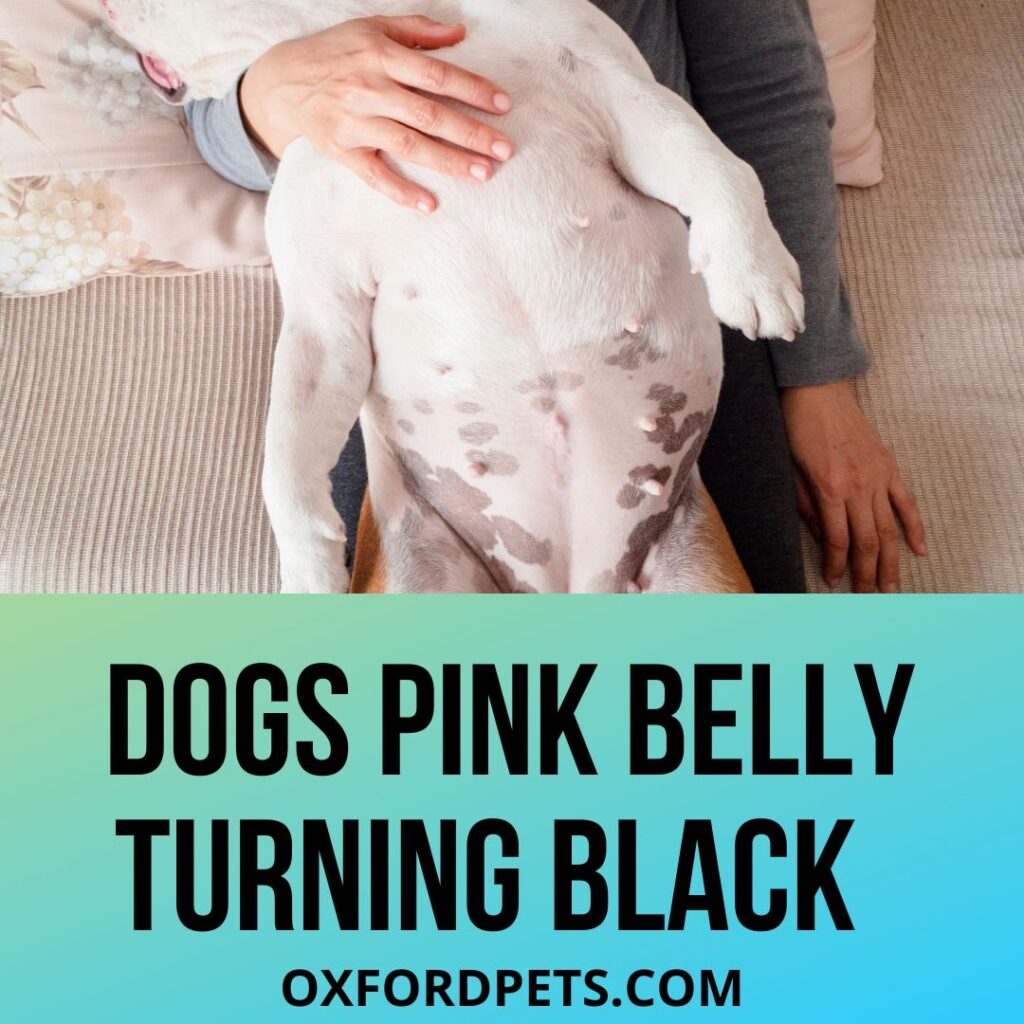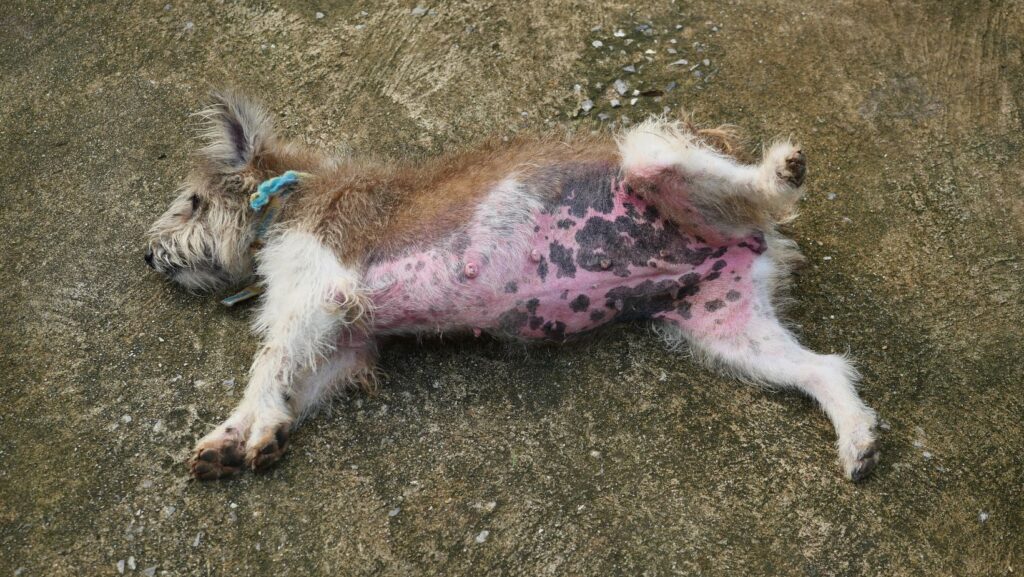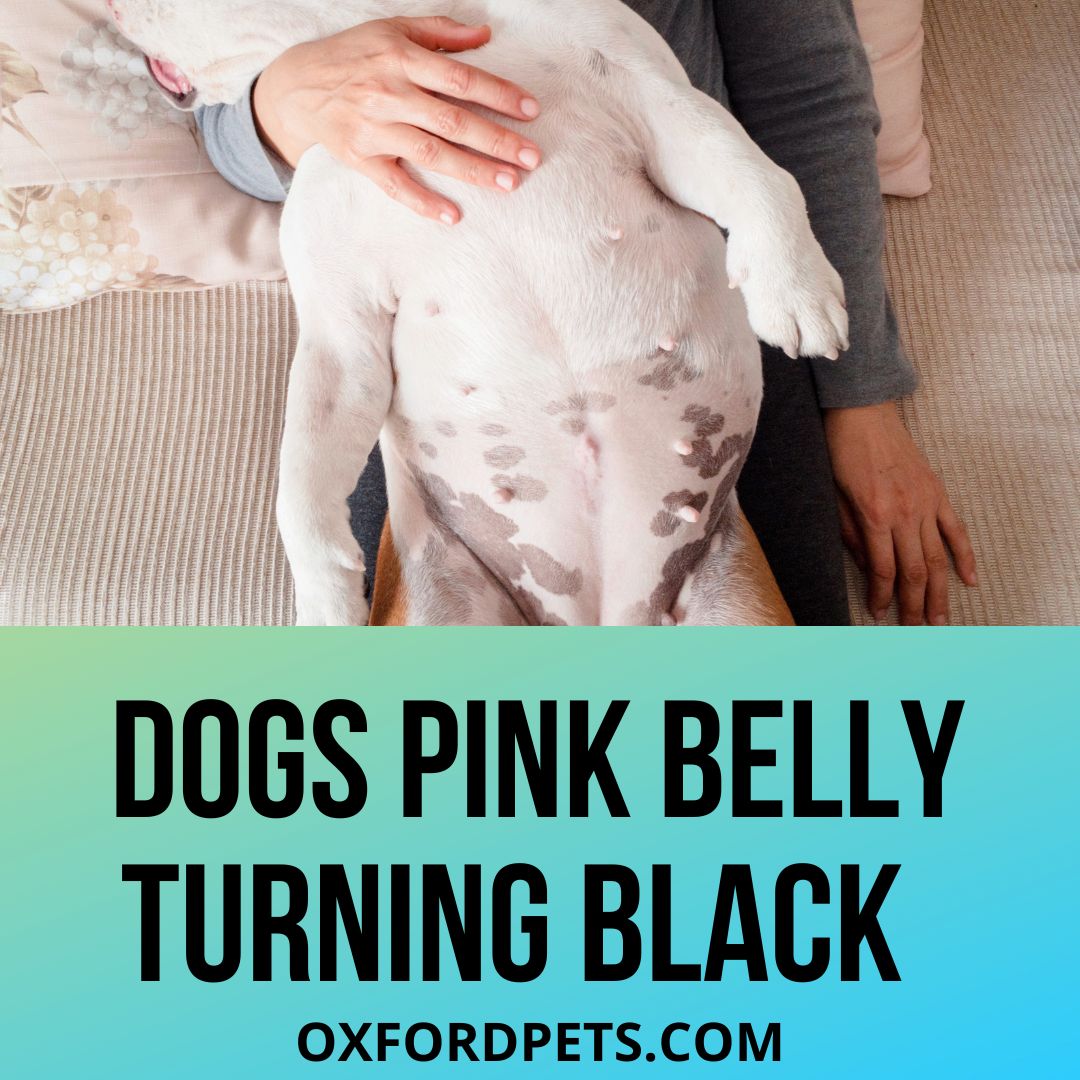Is Your Dog’s Belly Turing Dark From Regular Pink With Time? One of the most common reasons for your dog’s belly turning black over time is Hyperpigmentation. It is basically a darkening of the skin. Moreover, this is not an overnight process. There is a particular level of continuous exposure or trauma for your canine’s belly area to turn black.
Contents
- Hyperpigmentation in Dogs: Dog’s Tummy Turned Black
- Types of Hyperpigmentation in Dogs
- Miscellaneous Causes of Hyperpigmentation in Dogs
- Diagnosing Hyperpigmentation in Dogs
- Recovery of Hyperpigmentation in Dogs
- When Hyperpigmentation is Considered Normal?
- Is hyperpigmentation in dogs dangerous?
- Allergies and Hyperpigmentation in Dogs
- Genetic Disorders and Hyperpigmentation
- Other possibilities for your dog’s skin turning black
- Conclusion
- Frequently asked questions
Hyperpigmentation in Dogs: Dog’s Tummy Turned Black
Hyperpigmentation is the increase of dark pigmentation of the skin. If you find dark patches on your canine’s belly, you may think of hyperpigmentation as a potential cause. There are many conditions that result from this disease.
To be honest, hyperpigmentation is a secondary condition. Therefore, it is a secondary effect. Moreover, it usually happens when there is a certain trauma to the skin. Any skin inflammation like redness or scratching is the most common cause.
When this happens, the skin repair cycle is turned on. This cycle involves increased protective melanin pigment. This is a protective effect on the skin layers. When the protective pigment enters the skin, the skin is darker to see.
Reasons for skin allergies in canines include skin infection due to bacteria, scratching, skin inflammation, self-trauma, etc.
In a few cases, hyperpigmentation of the skin can occur after a previous skin problem and the skin is in the healing process.

Types of Hyperpigmentation in Dogs
Primary hyperpigmentation
Primary hyperpigmentation is not that serious because it is mostly cosmetic. It affects the skin appearance of your canine. However, it will not affect it beyond that.
The only thing you must ensure is that your dog does not experience any discomfort because of it and that you are able to touch the patches easily.
These patches will not go away soon. Moreover, any treatment would not do much to the patches.
Your canine will not experience any discomfort if they have hyperpigmentation. However, these patches can be permanent sometimes.
Secondary hyperpigmentation
Secondary hyperpigmentation is something serious. You need to be extra cautious if your pet has secondary hyperpigmentation. This is because it is a symptom rather than a condition.
This symptom is a sign of your pet getting ill in some way or the other. Of course, you need to find the cause and treat it with appropriate treatment. This means that the dark patches can disappear on their own.
Miscellaneous Causes of Hyperpigmentation in Dogs
- There are different reasons for a canine to have hyperpigmentation.
- Some of the causes include follicular dystrophy or acanthosis nigricans.
- Some canines may have hyperpigmentation because of hormonal problems like hypothyroidism or growth hormone-responsive alopecia.
- Additionally, folliculitis, castration-responsive dermatosis, Cushing’s disease, and injection-site alopecia can also contribute.

Diagnosing Hyperpigmentation in Dogs
Hyperpigmentation in dogs can be diagnosed through appearance signs on your dog. Your vet will try to mitigate other causes of the sign.
Your vet may ask you some basic questions like
- Is the itchiness in a particular season?
- Why is your dog’s belly turning black or red?
- Why is the area itchy? How is it itchy?
- What is your dog’s allergy history?
- Why does the darkened skin smell?
Once you have answered these questions, your vet will try to diagnose other possibilities like cytology, skin scraping, biopsy, etc. thus will help the vet to identify the root cause and treat it accordingly.
Treating Primary Hyperpigmentation
There is no cure for primary hyperpigmentation. However, if you detect it early, you can manage it with special shampoos and steroid ointments. In some canines, the condition is just cosmetic and does not require treatment.
Treating Secondary Hyperpigmentation
In secondary hyperpigmentation, your canine’s skin will be normal again after the treatment.
It is also important to treat any bacterial infection or yeast along with hyperpigmentation.
Your vet may prescribe antibiotics or antifungal medicines to treat bacterial or yeast infections.
He may also recommend medicated shampoos that you need to apply 2-3 times a week.
Recovery of Hyperpigmentation in Dogs
The recovery procedure is slow and may take a few weeks or months to take your canine’s skin back to normal.
Your vet will see whether any follow-up is required. These follow-ups are focused on continuously treating the area of concern and cause of hyperpigmentation for your canine.
When Hyperpigmentation is Considered Normal?
Your canine’s skin turning black over time can be normal when your pooch ages.
Mild darkening due to exposure to the sun is very common. This is particularly common in puppies with light coats.
Any changes in gaur cycle arrest can also cause skin darkening. This especially occurs in plush-coated canine breeds.
Certain changes in hormones due to certain muscle-building drugs can also cause hyperpigmentation.
Is hyperpigmentation in dogs dangerous?
If you do not provide proper treatment for hyperpigmentation, it can spread to other parts of your canine’s body as well. Moreover, your pooch may experience discomfort and itchiness. Additionally, the dog could even experience fluid discharge, hair loss, and infections.
Allergies and Hyperpigmentation in Dogs
Chronic itching is one of the reasons for your canine’s skin turning black. This is called pruritus-induced hyperpigmentation. You will have to handle the allergy triggering the chronic inflammation to reverse the changes.
Although your canine’s skin may not return to its original colour, treating this skin condition is severe for your canine’s overall comfort and health.
Genetic Disorders and Hyperpigmentation
Some canine breeds are majorly prone to develop black patches around the stomach.
For instance, breeds like huskies can easily get alopecia. This contributes to hyperpigmentation and hair loss.
Other possibilities for your dog’s skin turning black
1) Dog’s Skin Turning Black May Indicate an Inflammatory Process
If your canine is licking a particular area, he may experience dark skin there.
If he has light skin, it will turn brown due to licking. The skin may also turn black over time.
Infection and inflammation can trigger hyperpigmentation in your canine’s skin.
The most common triggers include allergies, mites, yeast, and bacterial infection.
2) Skin Turning Black Might Indicate a Hormonal Problem
Canines with Cushing’s syndrome have high levels of adrenal hormones.
One common sign here is increased skin pigmentation.
Moreover, Cushing’s syndrome can come along with calcinosis cutis.
3) Skin Infections Can Cause Your Dog’s Skin to Darken
Skin infections can occur and make the skin hyperpigmented.
Yeast and bacterial infections are common causes of skin infections.
Moreover, Mange can also cause the skin to darken.
Conclusion
In conclusion, the most common reason for your dog’s belly turning black over time is hyperpigmentation.
This is very common among dogs and it can be treated with special shampoos and certain medications.
Hence, if your canine is facing the same thing, do not worry and let your vet help you out with this.
I hope you enjoyed the article. I will be back soon with more interesting and informative pieces of writing.
Frequently asked questions
Is it normal for a dog’s belly to change colours?
In canines, changes in skin colour around the tummy area can be normal. However, some causes can indicate a severe health problem like canine hyperthyroidism in dogs. Hence, if you see your dog’s belly changing its colour, keep an eye on the symptoms.
What causes a dog’s belly skin to darken?
There are different causes that make your canine’s belly skin get dark. However, most canine parents feel that skin darkening occurs suddenly. Talking about hyperpigmentation develops over time and is due to skin trauma.
What does a yeast infection look like on a dog’s belly?
In the initial stage, the skin starts to turn red or pink. While your canine has a yeast infection, the skin looks thick, grey-black, and leathery. The skin also becomes more oily and greasy sometimes.
Why is my dog losing hair and skin turning black?
Alopecia X is one of the most common reasons for your dog to lose hair and skin urinating black.
This issue causes the animal to lose hair and develop patches of black skin on the site of loosened hair. Alopecia X is usually due to a hormonal imbalance.
